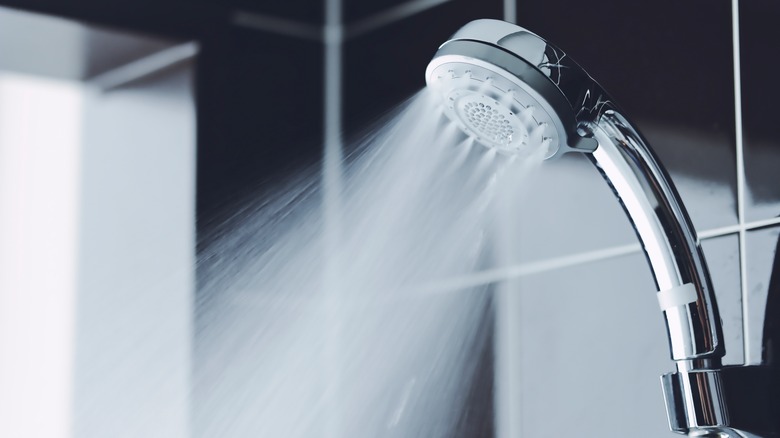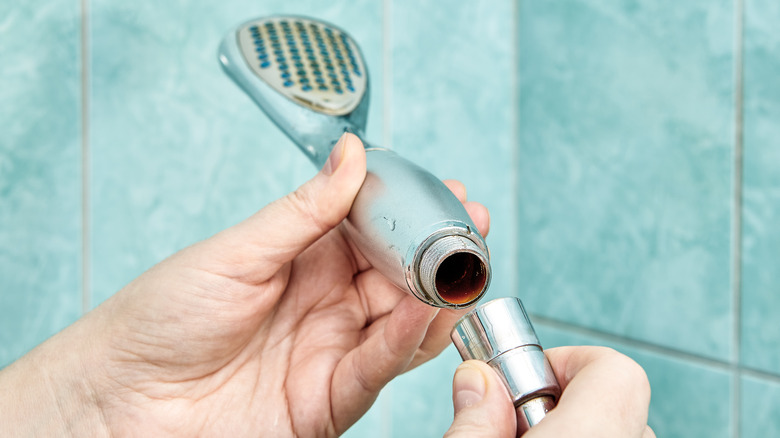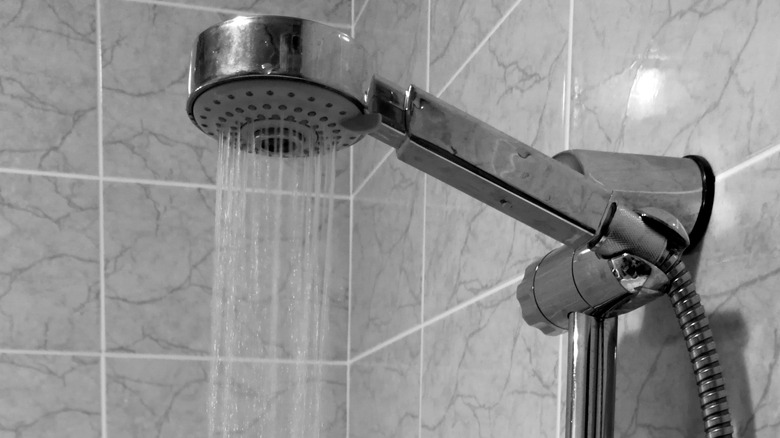This Hidden Feature Might Be Causing Your Shower's Low Water Pressure
Most of us don't think about our shower's water pressure on a routine basis. For the majority of the public, showers toe the line between a weak dribble and an aggressive stream, landing somewhere in the middle where you have enough pressure to adequately rinse without feeling like you're being sprayed with a fire hose. Occasionally, however, this pressure is off, and your showers suddenly feel like they're not actually getting anything clean. The fix to this issue could lie in one small part: a flow restrictor.
Flow restrictors are exactly what they sound like: a small piece of plastic or metal in the shower head that decreases the amount of water that gets through. These restrictors are great if you're working on decreasing your water consumption or need to calm down a particularly high-powered stream, but they can mean a dribbly, weak flow if you're already in need of a boost to the water pressure in your home.
How to remove your shower head's flow restrictor
To remove your shower head's water restrictor, you must first determine if you have one. To find out, unscrew your shower head and take a look inside. Most modern shower heads have a small plastic piece right around where the head screws into the hose. Specific instructions will vary based on the kind of shower head you have, but most flow restrictors require a bit of elbow grease — and some chipping away at the plastic — to remove. For example, in a TikTok, the creator ez_home used a screwdriver and a pair of pliers to pop out the middle piece to open up a path for the water.
After you're done, screw the shower head back on and test it out. If you don't notice a change, you might want to check again to ensure there aren't any leftover plastic bits blocking the flow. If all goes according to plan, however, you should see a significant increase in your water pressure, all without having to call in a professional or buy new parts.
What to keep in mind with this hack
It's important to consider that, in most situations, removing your shower head's flow restrictor is permanent. Because of this, you will have to buy a new shower head to fix the super-high water pressure if you're not satisfied with your results. While chipping away at the small plastic piece that slows down the water flow, it's also important to be very careful. A slip can easily cause damage to parts of the shower head or, in the worst-case scenario, an injury.
Additionally, if you notice that your water pressure hasn't changed, you might be dealing with another, more serious issue. Low water pressure can be caused by build-up in your shower head, leaky pipes, tightened water meter valves, or corrosion in old pipes that need replacement. If you're dealing with one of these issues, it's best to call out a professional to assess exactly what's going on and how you can work towards a fix.


